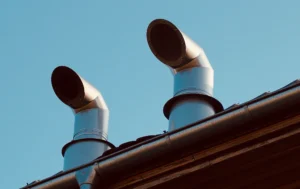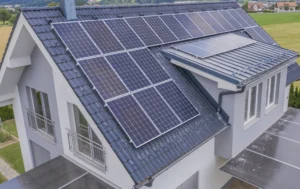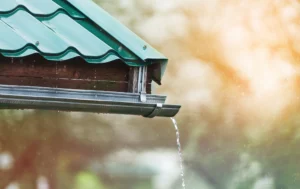What Is The Cost of a New Roof?
A new roof is a significant investment for any homeowner, and the cost can vary widely based on several factors. Whether you’re building a new home or replacing an old roof, understanding what drives the cost of a new roof can help you plan your budget more effectively. In this article, we’ll break down the key factors that influence new roof costs, helping you make an informed decision and avoid surprises during your roofing project.
Major Factors Affecting New Roof Costs
Roof Size
One of the most obvious factors that affect the cost of a new roof is its size. The larger your roof, the more materials you will need, and the longer it will take for the installation to be completed.
Measuring Roof Size (Square Footage)
Roofing professionals typically calculate roof size in “squares,” with each square being equal to 100 square feet. This measurement helps to standardise the pricing process. The overall cost of your roof will increase as the size of your roof increases, as more materials and labour will be required to complete the installation.
Roof Material
The type of material you choose for your new roof will have one of the most significant impacts on cost. Roofing materials vary in price, durability, and longevity, so selecting the right material is key to balancing your budget with your home’s needs.
Common Roofing Materials and Their Costs
Here are some of the most common roofing materials and their average costs:
- Asphalt shingles: The most popular roofing material, generally affordable but less durable.
- Metal roofing: More expensive but highly durable and long-lasting.
- Slate tiles: A premium option known for its longevity, but costly both in terms of materials and labour.
- Wooden shingles: Provides a natural look but requires more maintenance.
- Flat roofs (EPDM, TPO): Often used for commercial buildings, flat roofing materials can vary widely in price.
Durability and Lifespan of Different Materials
The lifespan of roofing materials can vary from 15 to 50 years or more. Asphalt shingles typically last between 15 to 30 years, while metal and slate roofs can last over 50 years. When considering cost, think about the long-term value of the material.
Roof Design and Complexity
Roof design can also influence the overall cost of your roofing project. Complex roofs require more labour, time, and materials to install.
Pitch and Slope
The steepness of your roof’s slope can impact the cost, as steeper roofs are more challenging and time-consuming to work on. Contractors may need specialised equipment to safely work on a steeply pitched roof, increasing labour costs.
Roof Access and Obstacles
If your roof is difficult to access or has multiple chimneys, skylights, or vents, the complexity of the job increases. These obstacles require additional work, both in terms of fitting the roofing material around them and ensuring they remain watertight.
Structural Reinforcement Needs for Heavier Materials
Certain roofing materials, such as slate and tile, are heavier than others. If your home’s structure isn’t strong enough to support a heavy material, additional reinforcement will be necessary, increasing both material and labour costs.
Labour Costs
The cost of labour can vary significantly depending on your location, the size of the project, and the complexity of the roof.
Local Roofing Contractor Rates
Labour rates fluctuate based on where you live, with urban areas often having higher costs due to higher living expenses. Roofing companies typically quote based on the scope of the project, so more extensive or complex jobs will carry higher labour costs.
Specialised Labour for Complex Roofs
If your roof has unique features or requires specific materials, you may need to hire specialised contractors, which can increase your labour expenses.
Impact of Location and Seasonality on Labour Costs
Labour costs may also rise depending on the time of year. Roofing projects in the winter or during storm seasons may cost more due to higher demand and more difficult working conditions.
Additional Costs to Consider
- Roof Removal and Disposal: Before installing a new roof, you may need to remove your old one. The complexity of this process can vary, depending on whether the roof needs to be completely torn off or if a new layer can be added over the existing roof.
- Tear-off vs. Overlay: A tear-off involves removing the entire old roof down to the decking, while an overlay is adding a new layer of shingles on top of the existing one. Tear-offs are more labour-intensive, as they involve disposing of old materials, but they also provide a better-quality result.
- Disposal Fees and Environmental Considerations: When tearing off an old roof, you’ll also need to account for disposal fees. Additionally, you may want to check if there are recycling programmes in your area for certain roofing materials, as this could lower costs and reduce environmental impact.
- Roof Underlayment and Insulation: Underlayment is a protective layer placed beneath the roofing materials to provide additional waterproofing and protection.
Cost of Installing or Replacing Insulation
If your insulation is old or inadequate, now may be the best time to replace it. This can increase your roof’s energy efficiency but will add to the overall cost of your project.
Roof Ventilation
Proper ventilation is key to ensuring your roof’s longevity and preventing problems such as condensation and ice dams.
Proper Ventilation for Roof Longevity
Adequate ventilation helps to regulate the temperature of your attic and roof, preventing moisture build-up that can lead to mould and rot.
Costs Associated with Roof Ventilation Systems
Installing or upgrading ventilation systems can add to your overall costs, but it is a critical investment for long-term roof health.
- Permits and Inspection Fees: Roof installations often require permits from local authorities, especially if the project is large or involves structural changes.
- Local Building Code Requirements: Building codes vary by location, and some areas have stricter regulations than others. Failure to comply with these regulations can result in fines or require additional work, so make sure your contractor understands local codes.
- Typical Permit Costs for New Roof Installations: Permit fees can range from a few hundred pounds to over a thousand, depending on the size and scope of your project.
- Inspection Fees During and After Installation: Your roof may need to pass inspections at different stages of installation, and the associated fees will depend on your local council’s requirements.
Long-Term Cost Considerations of a New Roof
Energy Efficiency
Choosing energy-efficient roofing materials can help reduce your home’s energy consumption and lower your utility bills.
Energy Star Rated Roofs
Energy-efficient roofing materials, such as Energy Star rated roofs, reflect more sunlight, keeping your home cooler in the summer and reducing energy costs.
Energy Savings Over Time
While energy-efficient materials may cost more upfront, the savings on heating and cooling costs over time can offset the initial investment.
Roof Warranties
Roof warranties can provide peace of mind, but they also affect the overall cost of your roof.
Manufacturer vs. Contractor Warranties
Manufacturer warranties typically cover the roofing material itself, while contractor warranties cover the workmanship. Make sure you understand what is covered and for how long.
How Warranties Affect Overall Costs
A longer or more comprehensive warranty may increase the upfront cost, but it could save you money in the long run by covering potential repairs.
Maintenance and Repairs
Regular roof maintenance can extend the life of your roof, but it’s essential to factor in the cost of both routine maintenance and unexpected repairs.
Regular Maintenance Costs
Most roofs require some degree of regular maintenance, whether it’s cleaning gutters or replacing broken tiles. These ongoing costs should be considered when budgeting for a new roof.
Preventative Maintenance vs. Emergency Repairs
Preventative maintenance can help avoid more expensive emergency repairs, such as leaks or structural damage, saving you money in the long term.
Financing and Budgeting for a New Roof
Financing Options for Homeowners
For many homeowners, financing a new roof is necessary, as it’s a significant investment.
- Home Equity Loans and Personal Loans: Home equity loans and personal loans are two common options for financing a roof replacement. Both come with varying interest rates and repayment terms, so it’s important to compare options.
- Roofing Company Payment Plans: Some roofing companies offer payment plans, allowing you to spread the cost of your roof over time. Make sure to read the fine print to avoid any hidden fees.
- Budgeting for Future Roof Replacements: It’s a good idea to plan ahead for future roof replacements, as most roofs will need replacing at least once during the lifetime of a home.
Expected Lifespan of Various Roofing Materials
As previously mentioned, roofing materials have different lifespans. Consider the longevity of your chosen material when budgeting for future replacements.
Recap
Understanding the factors that influence new roof costs can help you make informed decisions and plan your budget more effectively. From the size and material of your roof to labour costs and long-term maintenance, many variables impact the final price.
By considering these factors and working with a professional contractor, you can ensure that you get a quality roof that fits within your budget.
Keen to learn more about the benefits of getting a new roof? Contact All Custom Roofing today and we’ll respond swiftly!



